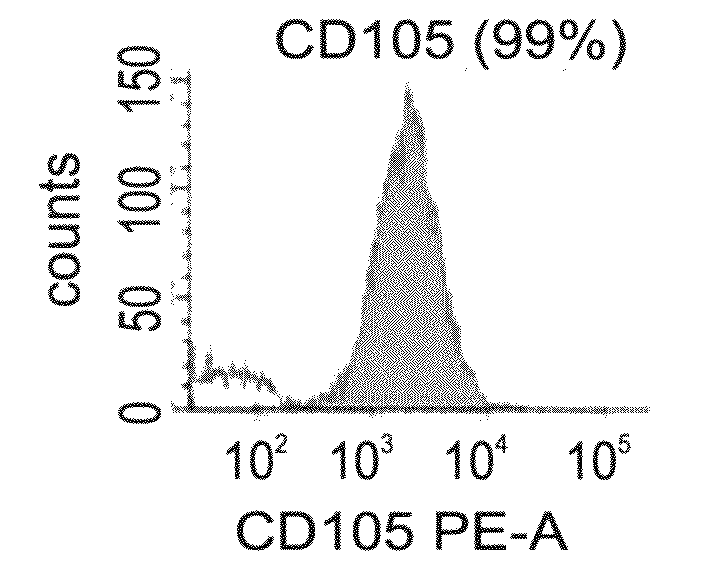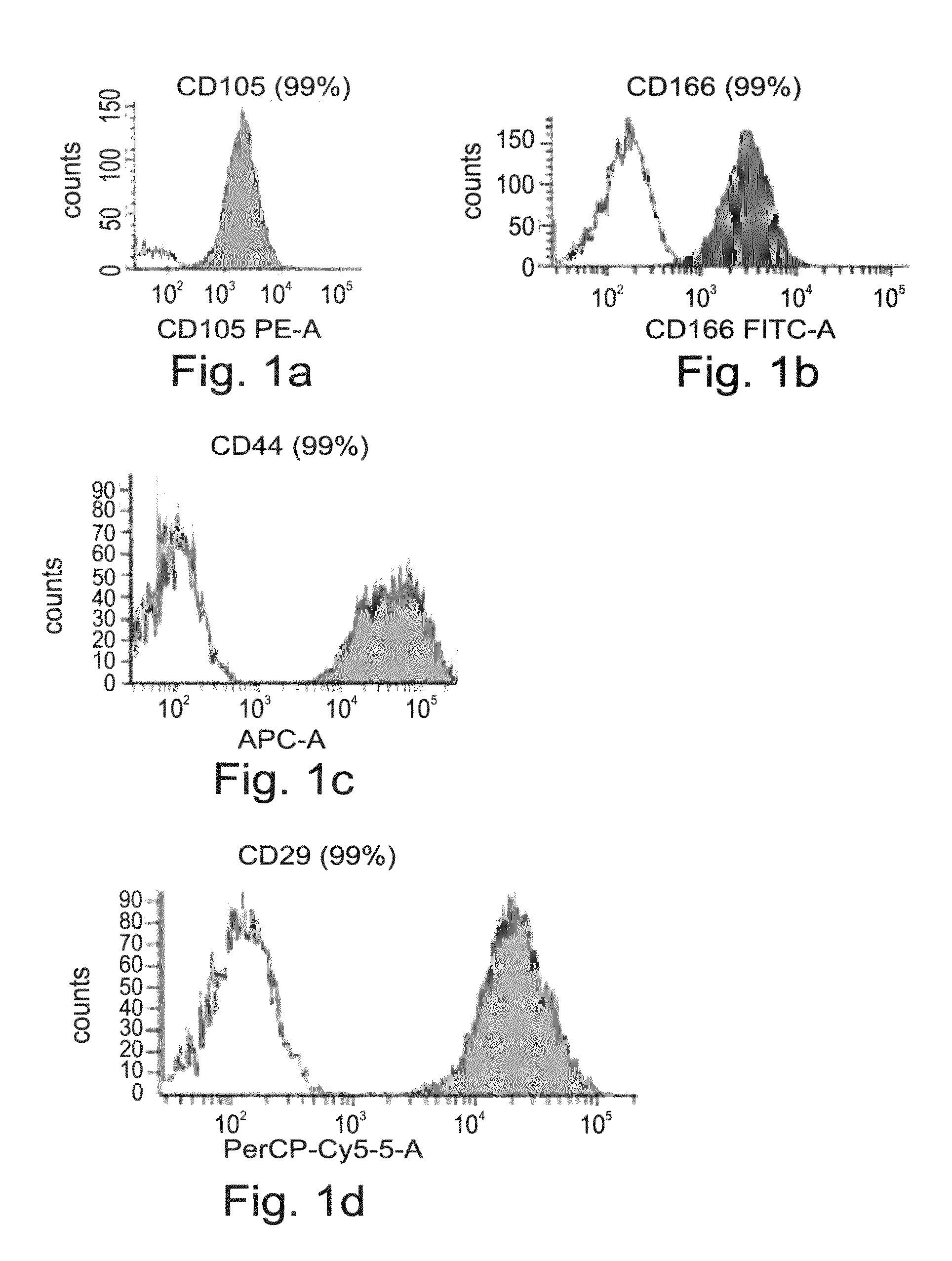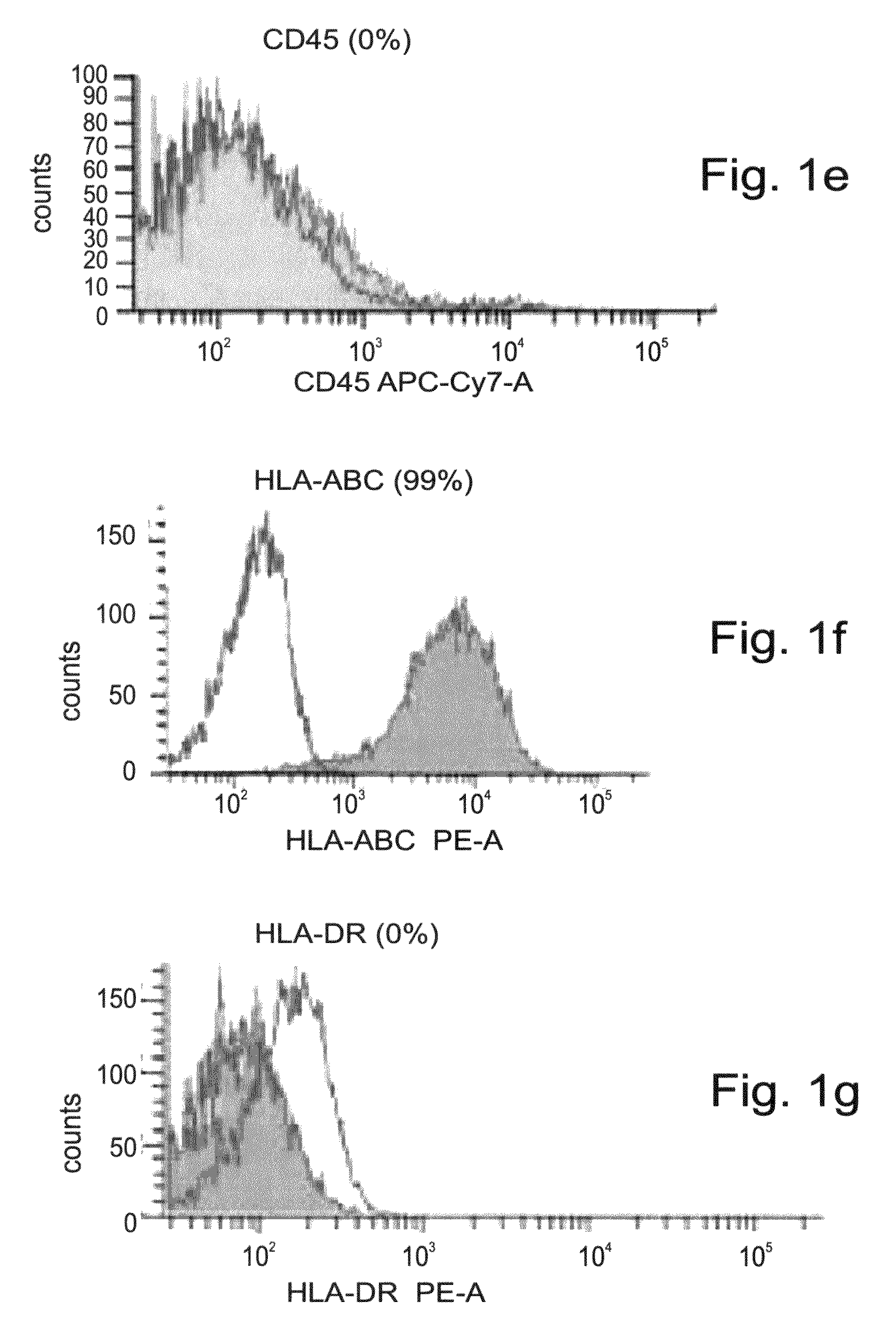Adult Stem Cell-Derived Connective Tissue Progenitors for Tissue Engineering
a technology of connective tissue and progenitor cells, applied in the field of adult stem cell-derived connective tissue progenitor cells, can solve the problems of inability to achieve the effect of tissue engineering, inability to use cell grafts in tissue engineering applications such as in vitro construction of mature tissue, and inability to demonstrate the use of such cells in tissue engineering applications
- Summary
- Abstract
- Description
- Claims
- Application Information
AI Technical Summary
Benefits of technology
Problems solved by technology
Method used
Image
Examples
example 1
Isolation of Connective Tissue Progenitor Cells from Human Adult Stem Cells
[0184]A cell source for tissue engineering should be highly proliferative while phenotypically stable in vitro, providing a sufficient amount of cells. As estimated elsewhere (Muschler, G. F. et al, 2002), approximately 7×107 osteoblasts are needed to form one cubic centimeter of a new bone. While reducing the present invention to practice, the present inventors have uncovered, through laborious experimentations, culturing conditions suitable for the isolation, propagation and differentiation of connective tissue progenitor cells derived from adult stem cells, as follows.
[0185]Experimental Results
[0186]Isolation of connective tissue progenitor cells (CTPs) from adult stem cells Adult stem cells from fat, foreskin or fetal tissue were dissociated with a combination of enzymatic digestion and aggressive mechanical agitation. The derived cells were cultured in the presence of a CTP medium containing ascorbic aci...
example 2
CTPs Express Markers of Mesenchymal and Osteoblast-Like Cells
[0190]To test the potential of the adult stem cells derived CTPs of the present invention to differentiate into the osteogenic lineage, the expression profile of the CTP cells of the present invention was assessed by RT-PCR, cDNA microarray and FACS analyses, as follows.
[0191]Experimental Results
[0192]CTPs express osteogenic markers—Gene expression of CTP cells grown in the presence of the CTP medium from passages 1 and 10, was assessed by RT-PCR analysis. As is shown in FIGS. 2a-u, CTPs stably express core binding factor alpha 1 (CBFA1), and SOX9, both are early transcription factors known to play a major role in osteoblast and chondrocyte differentiation. Type I collagen, the most abundant extracellular protein which is synthesized by osteoblasts, osteonectin and osteopontin, two major non-collagenous bone matrix proteins, parathyroid hormone receptor 1 (PTHR1), which regulates mineral homeostasis and bone formation, and...
example 3
CTPs are Capable of Producing Bone Matrix
[0197]To test to capacity of the CTPs of the present invention (from fetal tissue, foreskin tissue and fat tissue) to differentiate into the osteogenic lineage and form mineralized matrix, inorganic phosphate was added to the CTP medium and the CTP cell cultures were assessed for the presence of mineralized matrix, as follows.
[0198]CTP cells produce mineralized matrix—To test the capacity of the CTP cells of the present invention to form mineralized matrix, inorganic phosphate (beta-glycerophosphate) was added to the CTP medium. Briefly, CTPs from any passage of passages 1-25 were grown in a CTP medium supplemented with 10 mM beta-glycerophosphate and the potential of matrix formation was assessed. As is shown in FIG. 8a, enhanced mineralization which was visible macroscopically (e.g., at passage 11), or was induced at different passages if cells were grown until over-confluent. Mineralization was confirmed by Alizarin Red staining (FIG. 8b),...
PUM
 Login to View More
Login to View More Abstract
Description
Claims
Application Information
 Login to View More
Login to View More - R&D
- Intellectual Property
- Life Sciences
- Materials
- Tech Scout
- Unparalleled Data Quality
- Higher Quality Content
- 60% Fewer Hallucinations
Browse by: Latest US Patents, China's latest patents, Technical Efficacy Thesaurus, Application Domain, Technology Topic, Popular Technical Reports.
© 2025 PatSnap. All rights reserved.Legal|Privacy policy|Modern Slavery Act Transparency Statement|Sitemap|About US| Contact US: help@patsnap.com



